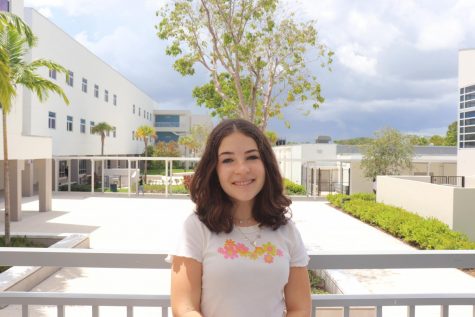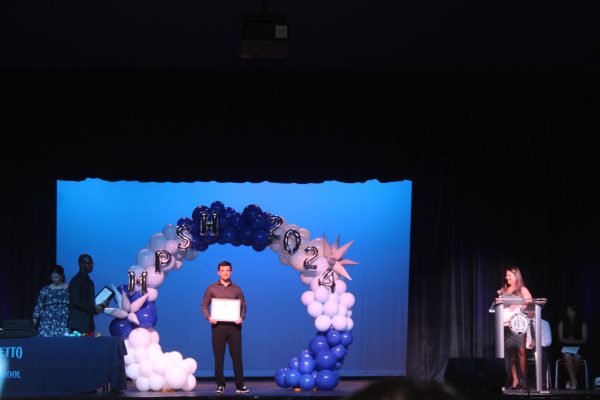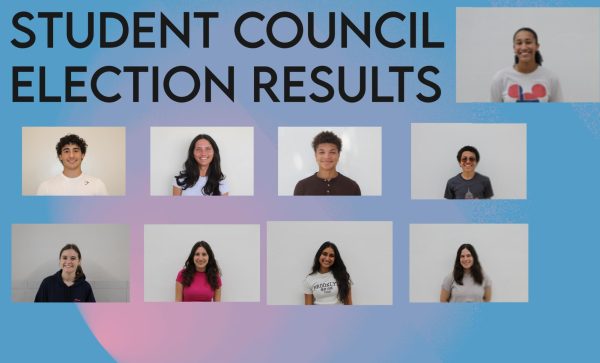One Year Later: A Reflection on the Covid-19 Pandemic
March 13, 2021
With almost two million cases and 31,000 deaths in Florida, the COVID-19 pandemic has affected healthcare workers, families and students in devastating ways. Over the past 12 months, the progress of the pandemic has forced society to modify every aspect of their daily lives.
On Mar. 1, 2020, Florida Governor Ron DeSantis announced that two Floridians — one from Hillsborough County and one from Manatee County — had tested positive for COVID-19, the first time the virus had officially emerged in the state. Within another week, the state had more than 100 confirmed cases, and by the end of the month, the state reported more than 6,700 cases, resulting in 85 deaths.
On Mar. 13, Miami-Dade County Public Schools Superintendent Alberto Carvahlo announced the closure of all public schools in the county. Consequently, students, teachers and staff alike stayed home, adapting to an all-virtual teaching curriculum in a short period of time.
“At the beginning of March, I think we still didn’t realize that we would be closing schools down,” Miami Palmetto Senior High School Principal Victoria Dobbs said. “At that point, we really thought we were going into spring break, and we would be out for a couple of weeks. And then obviously, those couple of weeks turned into the remainder of the school year.”

For students, the so-called “Coronacation” lasted much longer than a few weeks, and required them to adapt to an entirely new learning schedule. Palmetto began using online learning platforms, such as Zoom and Microsoft Teams, for the very first time, allowing students to attend classes virtually. At the same time, teachers expected students to prepare and study for Advanced Placement exams during May, heightening the uncertainty and tension for students.
“The pandemic [first] affected me because everything was so chaotic and nobody knew what was going on,” Miami Palmetto Senior High sophomore Sophia Tomczak said. “It was my first time taking an AP last year, and because of that, with all of the problems that Zoom and Microsoft Teams were having, it was really anxiety-inducing.”
The first stages of the COVID-19 pandemic affected individuals socially, too, as the mandated stay-at-home policy put in place at the end of March kept individuals from visiting friends and family. In order to stay in touch, many relied on technology more than ever before, opting to use Zoom, FaceTime and online games to connect with friends and loved ones.
Despite these virtual interactions, students still faced mental deprivation as a result of pandemic: about four in 10 adults in the U.S. have reported symptoms of anxiety or depressive disorder during this time, up from one in ten adults who reported these symptoms from Jan. to June 2019, according to the Kaiser Family Condition.
“Kids are suffering from the pandemic and the isolation of not being able to see their peers or having to study at home because of health concerns,” Dobbs said. “That is probably the saddest part.”
As the 2019-2020 school year came to a close, virtual events replaced Palmetto end-of-year celebrations, from graduation to awards ceremonies.
During summer of 2020, a wave of cases hit Florida, which led to the highest number of hospitalizations from COVID-19. On Aug. 15, the number of COVID-19 patients of hospitals peaked at 3,432. At the same time, health care workers tried their best to manage cases, despite capacity limits in hospitals.
Emergency physician, UC San Diego Medical Student Director and Palmetto alumni Jorge Fernandez has been working as an emergency room doctor, treating patients with COVID-19 in hospitals in San Diego and El Paso, and remembers the summer as a disastrous time for health care workers and patients alike.
“Starting in June of last year, we had a horrible summer in El Centro,” Fernandez said. “It was one of the hardest-hit places in the whole country with COVID. People needed to be on oxygen to stay alive. The hospital is pretty small out there and quite overrun, so we had to start transferring out patients all across California by helicopter to other hospitals.”
As the summer came to a close, students began to prepare for a more rigid virtual schooling schedule than the previous year. On Aug. 31, 345,000 students in Miami-Dade County began the 2020-2021 school year virtually. While hoping for a smooth start both students and teachers faced technical difficulties that affected their school day due to the My School Online program, which Palmetto has since abandoned in favor of Zoom meetings. On Oct. 7, MDCPS students had the opportunity to return to in-person learning, which remains the current mode of learning today, alongside Zoom classes.
As cases began to drop after the start of the school year, Gov. DeSantis shifted the entire state of Florida to phase three of his reopening plan, which lifted most social distancing guidelines, including any capacity limits on restaurants and bars, on Sept. 25. However, as the holiday season approached, COVID-19 cases surged from a seven-day weekly case average of 2,500 in October to a weekly case average of 11,000 in December in Florida, affecting thousands of individuals and families across the state.
Fernandez remembers these times as especially difficult to go through, as hospitals reached their maximum capacities nationwide.
“In El Centro, the winter was so bad that we actually had to build huge tents that were like hude football field tents, full of oxygen machines, where [people] would sit outside with heat lamps,” Fernandez said.
In addition to the rise in cases, another big development occurred during this time: Pfizer became the first drug company to have a COVID-19 vaccine approved for emergency use authorization in the U.S. The first COVID-19 vaccination occurred quickly after — Dec. 14 — and has since been dispersed to more than 93 million individuals, reaching about 18.4% of the population, according to NPR.
The current success of the vaccine brings hope as the country moves into its first year since the onset of the pandemic. According to NBC, if production for the vaccine continues at the current rate, it can reach 300 million Americans, hopefully lessening restrictions and tensions the country has already faced for so long.
“I am looking forward to not having to deal with masks and not having to be worried about who is around you and who you can see — just having that stress-free interaction with other people,” Tomczak said.
The COVID-19 pandemic in its entirety has forced individuals to modify every aspect of their lives, including their social lives, education and relationships with others. Consequently, the pandemic has also taught everybody to enjoy life to its fullest, and hope for the best for the future during this harrowing time.
“The big lesson for me was to live life so that you are happy with it,” Fernandez said. “You never know when the end of your life is. It is sad, but I saw multiple people dying of COVID, and many were my age, so a big thing for me was to stay connected with your core friends and family the best you can, because you don’t want to have any regrets.”















